ANGLO BOER WAR: REMEMBERING THE FOREIGN VOLUNTEERS (2)
Jennifer Bosch
Anna Sofia Wilhelmina Lindblom – (Sweden)
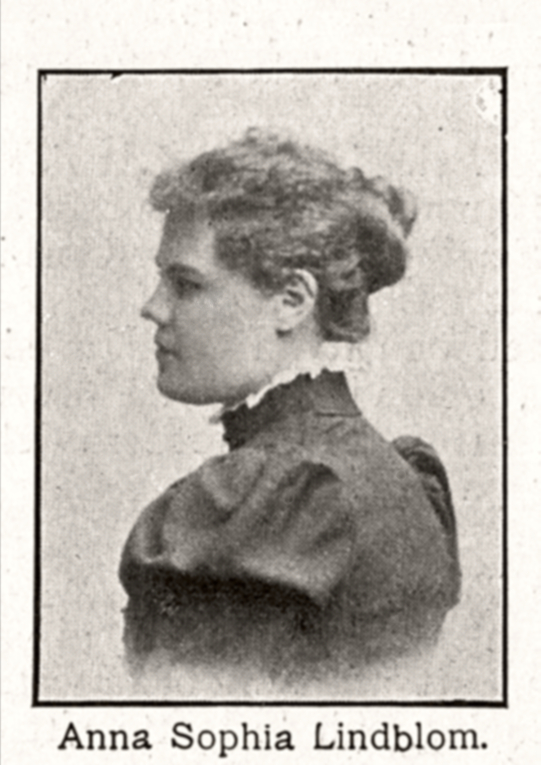
Anna Lindblom in the magazine Hvar 8 dag, nr 35, 1900. Photographer unknown. Image source- Svenskt Porträttarkiv CC-BY-SA 4.0
Anna Sofia Wilhelmina Lindblom, born in 1864 in the Sankt Lars parish of Linköping, Sweden, was a midwife and physical therapist who played a pioneering role in international humanitarian aid during the Second Boer War. Following a personal heartbreak, she trained as a midwife in Stockholm, qualifying in June 1891.
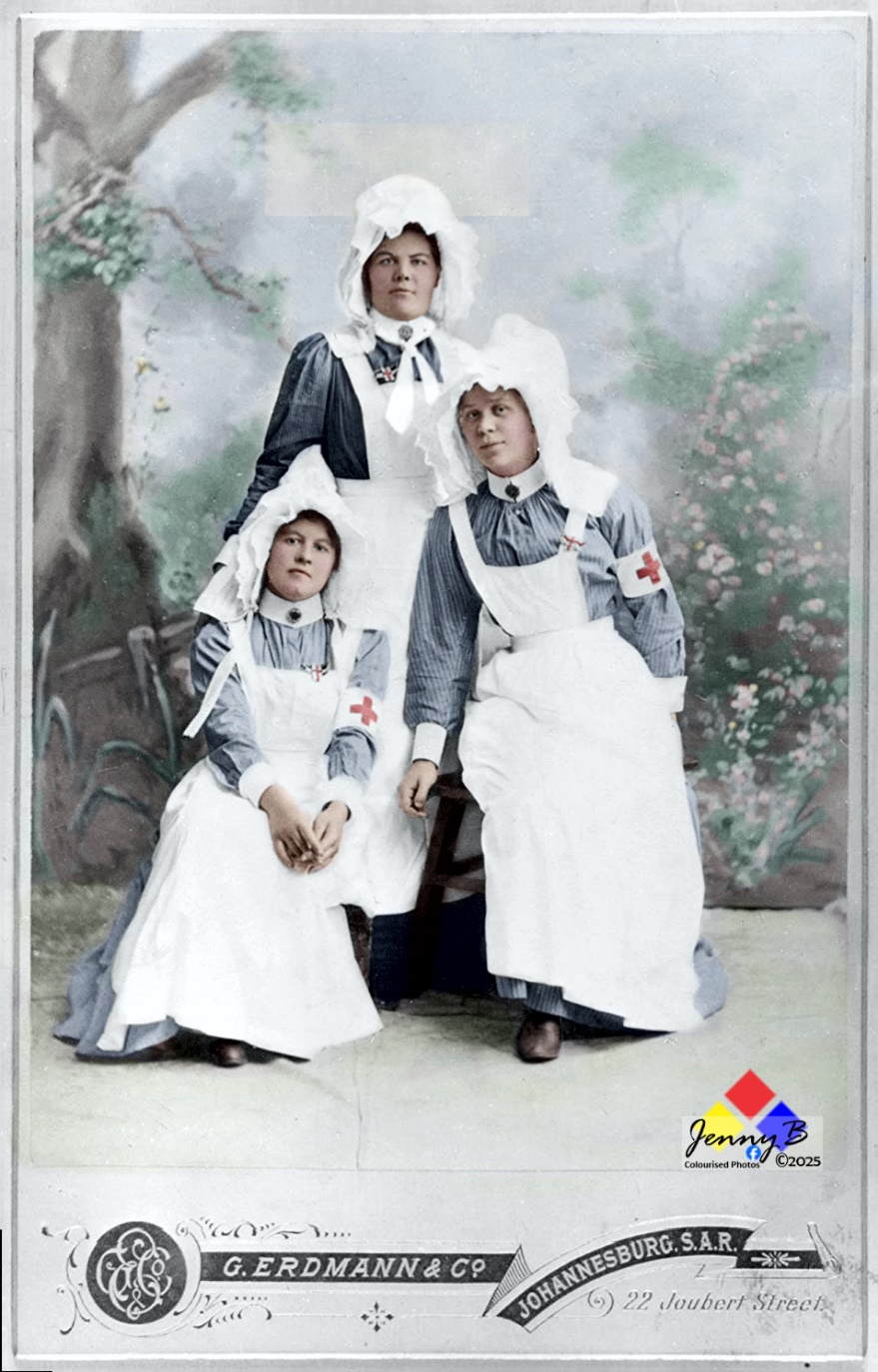
Elin Lindblom, her sister Anna and Hildur Svensson
In 1893, she joined her brother Frans in South Africa, where he had established a physical education institute and later a hospital in Johannesburg. After his death from malaria in 1897, Anna briefly returned to Sweden but soon accepted the leadership of the Swedish ambulance service within the Scandinavian Corps, a group of 113 volunteers from Sweden, Norway, Denmark, and Finland supporting the Boers. She returned to South Africa in 1898, heading the first-ever Swedish ambulance in an armed international conflict. Alongside her sister Elin Lindblom and Hildur Svensson of Gothenburg, Anna served under the Red Cross without formal nursing credentials, earning recognition as a nurse due to her dedicated work. Their ambulance, a large ox-drawn “vortrekker” wagon equipped with supplies and medicine, was one of 12 operating during the war. Anna later returned to Sweden in 1905, settling in Stockholm to work as a physical therapist. Her contributions were honoured with the International Red Cross medal and, in 1937, the Transvaal and Oranje-Fristat war medal. Anna Lindblom died in 1955 at the age of 91 and is buried at Gamla kyrkogården in Linköping.

Reverse of photo nurses Lindblom, Anna and Hildur
Reworded from the writings of Ulrika Lagerlöf Nilsson
(Translated by Alexia Grosjean)
Published 2021-05-11
https://skbl.se/en/article/AnnaLindblom
Mahomed Ben Nasser- (Algeria)
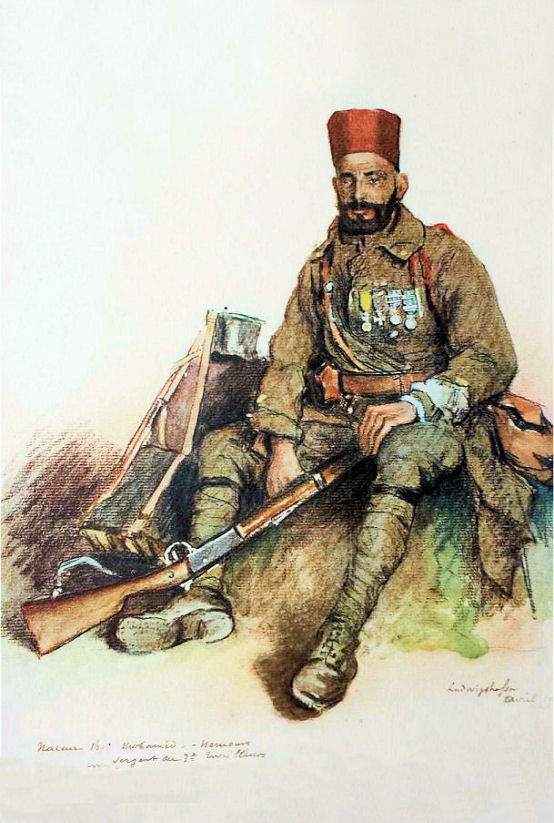
Photo credit: Mahomed Ben Nasser? – http://scrapironflotilla.tumblr.com/image/145175542451
This painting by Julien Le Blant is possibly of Mohamed Ben Nasser, a Muslim, who came from North Africa and eventually became a Transvaal citizen.
Nasser was formally a spahi – a member of the Algerian cavalry in French service and was also possibly the only Arab to gain citizenship of the Transvaal. After his quarrel with Gallopaud he transferred to an Austrian unit commanded by a Hungarian Hussar and later was captured by the British and spent the remainder of the war as a POW in Ceylon.
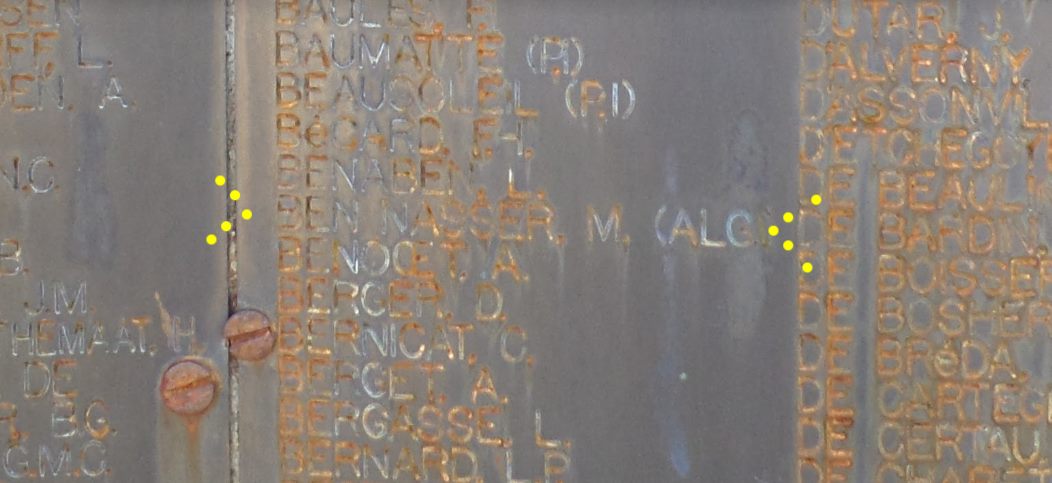
Sources: -With the Boer Forces by Hillegas [https://www.angloboerwar.com/…/1465-hillegas-chapter-9…]
-The South African War Reappraised edited by Donal Lowry
Photo credit: Mahomed Ben Nasser? – http://scrapironflotilla.tumblr.com/image/145175542451
Lt. Gallopaud – (France)
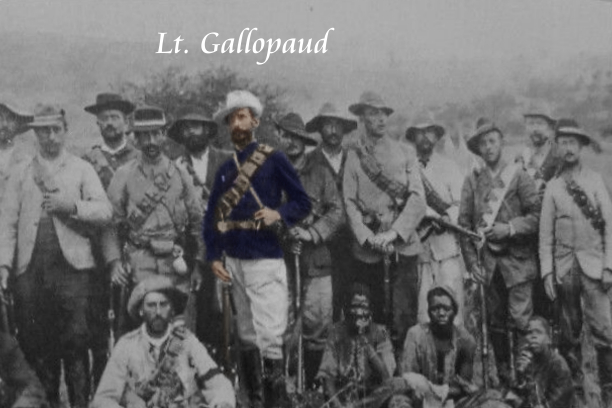
Gallopaud was under Col Villebois-Mareuil’s command. He led his men in a successful attack at Colenso and distinguished himself later in the Free State campaign in several battles. He also went to the Transvaal, according to Hillegas, for experience. After Villebois-Mareuil’s death at Boshoff, Gallopaud was elected Commandant of the French Legion prior to them joining with de la Rey’s men.
He also quelled a mutiny within his men when an Algerian, named Mahomed Ben Naseur (Nasser) threatened to shoot Gallopaud with a Mauser.
Sources:
-With the Boer Forces by Hillegas [https://www.angloboerwar.com/…/1465-hillegas-chapter-9…]
-The South African War Reappraised edited by Donal Lowry
Photo credit: Gallopaud group photo – War Museum – Bloem. posted by Anjoret – Pinterest
Mahomed Ben Nasser? – http://scrapironflotilla.tumblr.com/image/145175542451
Col. Arthur Lynch – (Australian born son of Ireland)
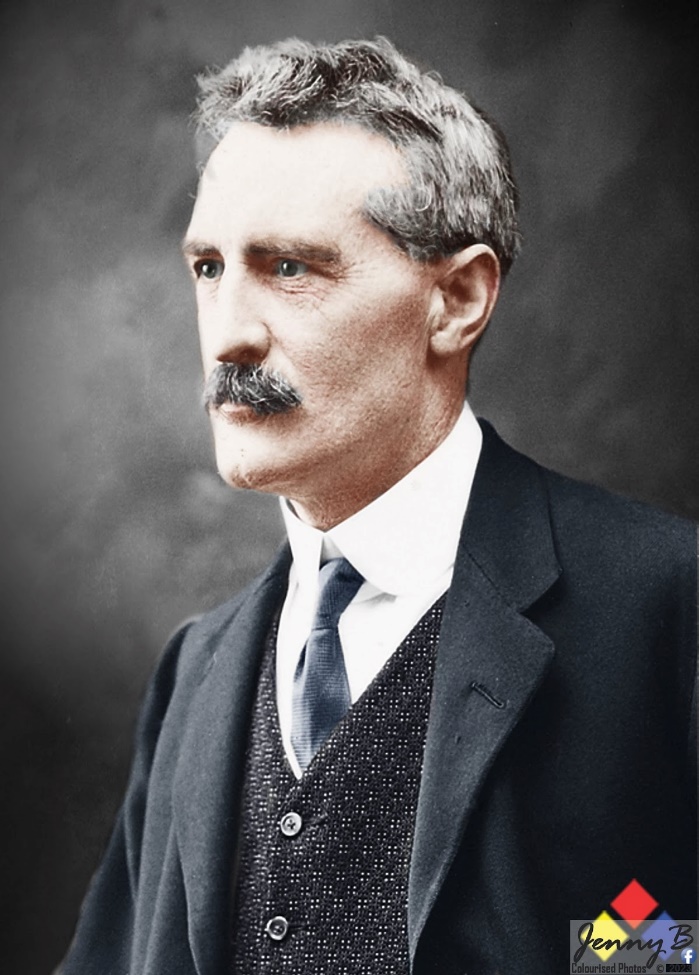
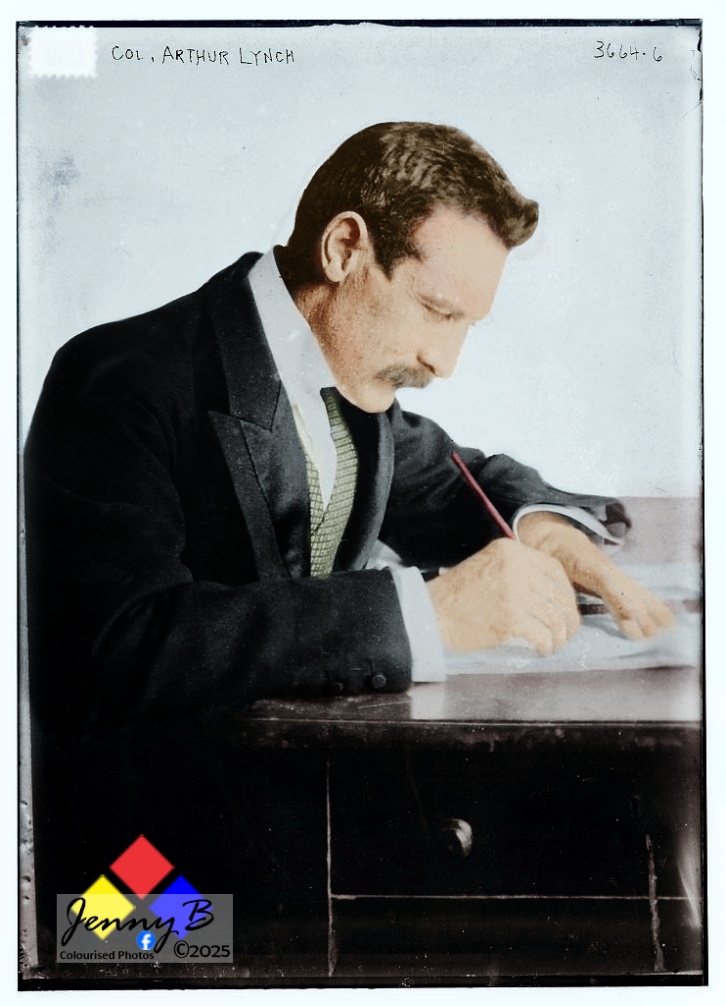
The 2nd Irish brigade was formed in January 1900. Lynch went to Transvaal, South Africa as a war correspondent for Le Journal, a French paper and as Michael Davitt coins it, threw away the pen for the Mauser. His linguistic abilities secured a rank as Colonel. (He was fluent in French and German). He was a capable leader, enjoying the respect of his men and the confidence of General Botha.
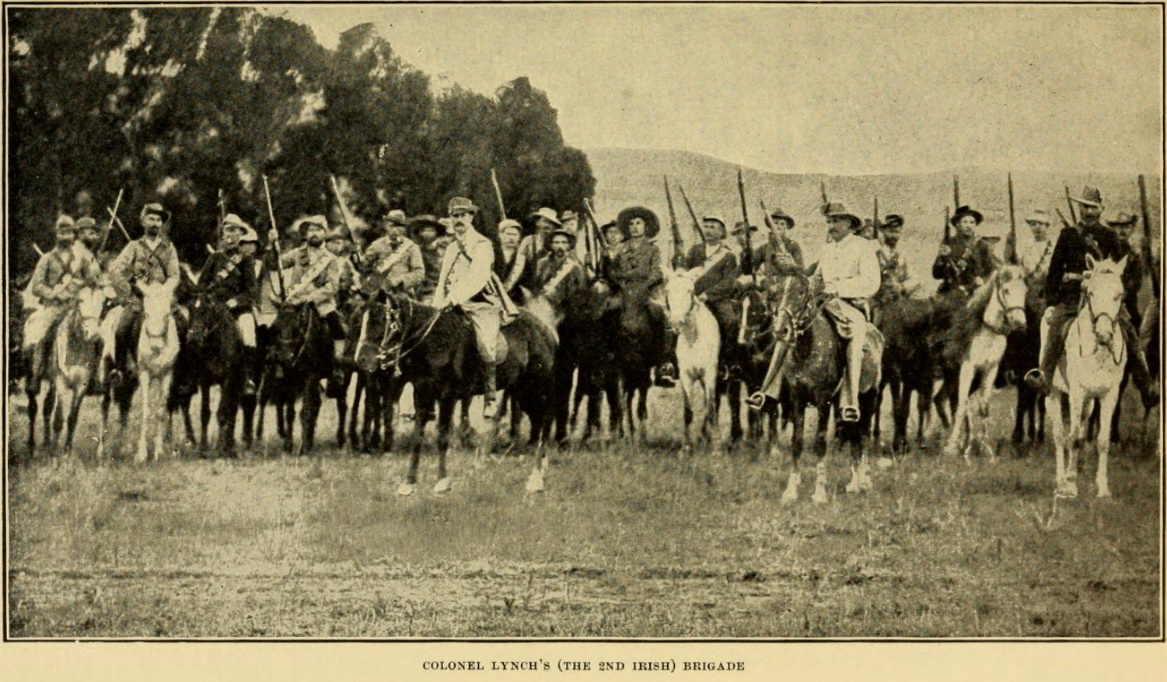
(Lynch’s recording of the corps he commanded)
In the retreat of Joubert from Ladysmith to Glencoe, Lynch and his men fought in the rear guard, and were several times in action. The Brigade remained attached to General Lukas Meyer’s command in Natal until the whole of what had been the army of the Tugela and the siege of Ladysmith retired north through Laingsnek; Lynch and his men on one occasion being instrumental in saving some of Ben Viljoen’s guns from capture by Buller’s forces. After the re-entry of Meyer’s commandoes in the Transvaal, Lynch and a few Irishmen who were in his corps went to the Vaal River and joined the remnants of the various commandoes and brigades who were fighting with Botha, Steyn and de la Rey to resist the advance of Robert’s huge army. All fell back first on Johannesburg then on Pretoria.
Colonel Lynch’s chief officers were Major Mitchel and Captain Oates. Lynch recruited roughly 150 men to begin and later his brigade’s cosmopolitan compliment included Ireland, America, Australia, Transvaal, Free State, Cape Colony, France, Germany, Holland, Italy, Austria, Russia, Greece, and Bulgaria and one Englishman.
Source: The Boer Fight For Freedom by Michael Davitt
Photo credit: Wikipedia Taken circa 1915
John MacBride – (An Irishman by birth)
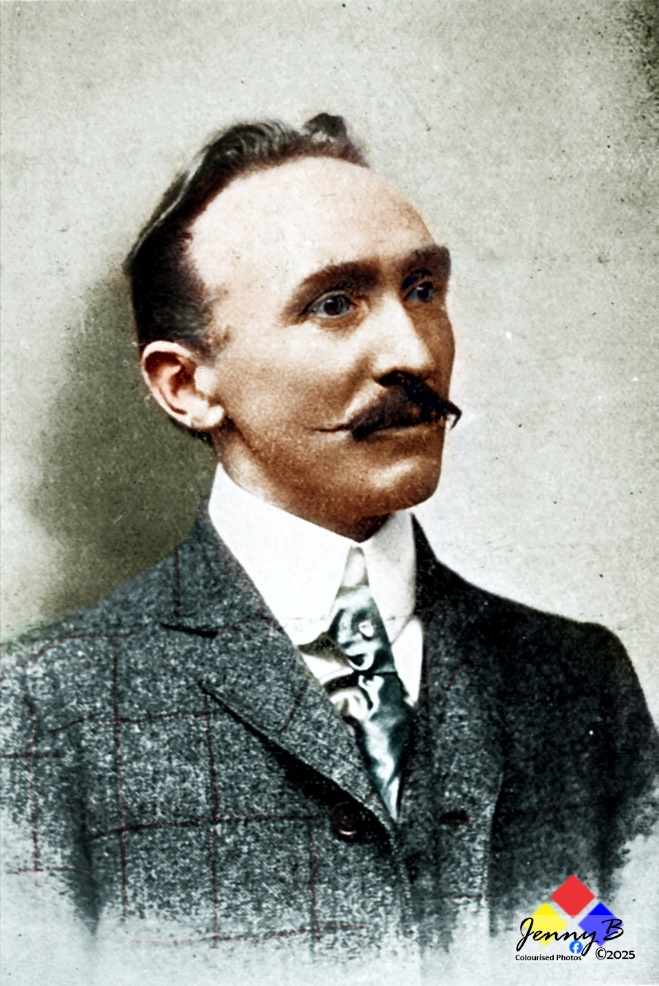
MacBride
During the Boer War, Ireland saw the rise of an ‘Anti-War’ movement that was more accurately a manifestation of anti-British sentiment. Notably, at a rally in October 1899, 20,000 people heard a provocative letter suggesting that two Maxim guns be sent to aid the Boers, symbolically named ‘Parnell’ and ‘Wolfe Tone’. Shortly before, the Boer government approved the formation of an Irish Transvaal Brigade, led by the unconventional Irish-American John Blake, with Michael MacBride later assuming leadership when Blake was wounded. Although the Brigade was small, with around 300 men, it stood in stark contrast to the roughly 28,000 Irishmen who fought for the British. Occasionally, these opposing Irish groups clashed, such as at the savage Battle of Dundee. This division among Irish combatants became the subject of satirical commentary, exemplified by a humorous contemporary song mocking the oddity of Irishmen fighting on both sides.
Re-worded from: http://theirishrevolution.ie/1916-lives-john…/…
“……..On Monday October 30, 1899, at the Battle of Modderspruit, MacBride had his horse shot from under him, but was not seriously hurt. Col. Blake was not as lucky, as a serious shell wound to his arm put him out of action for about six weeks. That put MacBride in actual command of the brigade upon which the Irish had already bestowed his name. The Boers at this point had surrounded the British in the town of Ladysmith and hunkered down for a siege that would last 118 days.
This was not a happy time for the Irish Brigade, as the boredom of siege warfare took its toll on morale. By the time it was over their numbers were down to under 100 and Blake was taking less interest in his command. At this same time a second Irish Brigade was formed in Johannesburg under Australian Arthur Lynch**
“I have looked down the muzzles of too many guns in the South African war to fear death and now please carry out your sentence.”
Source: http://thewildgeese.irish/…/fighting-the-vampire-irish…
Photo Credit – https://en.wikipedia.org/wiki/John_MacBride
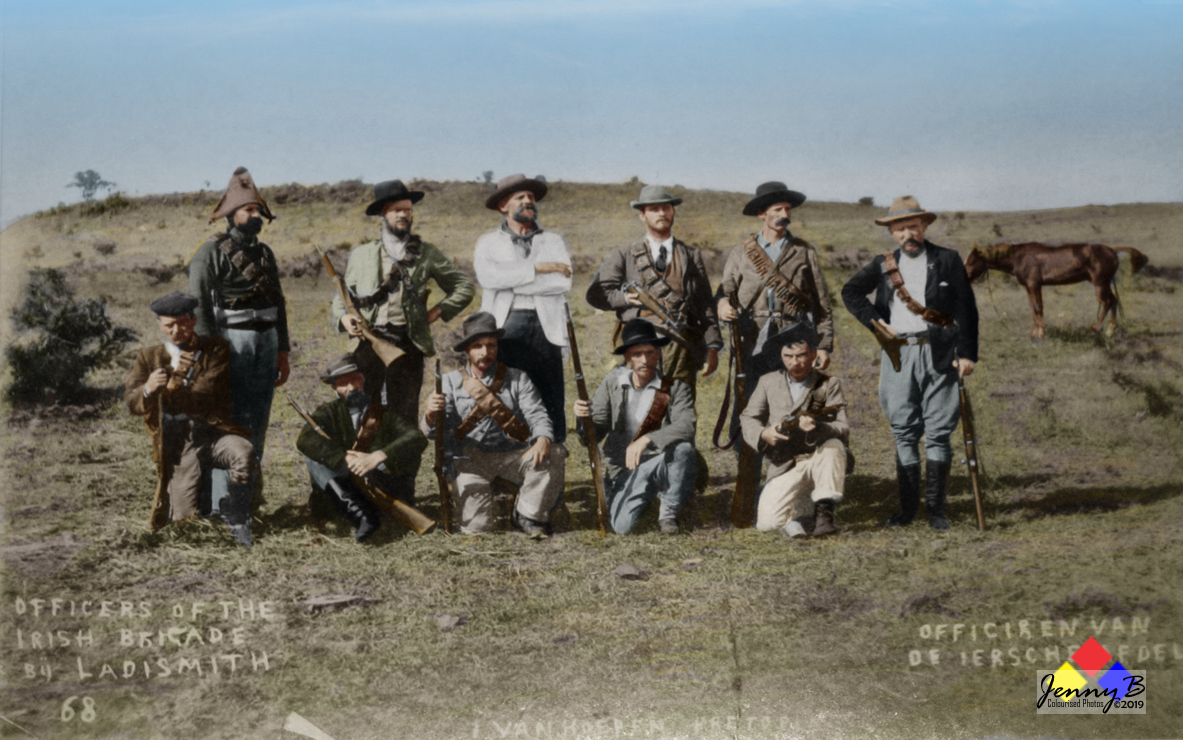
The Irish Brigade – MacBride stands right-most.
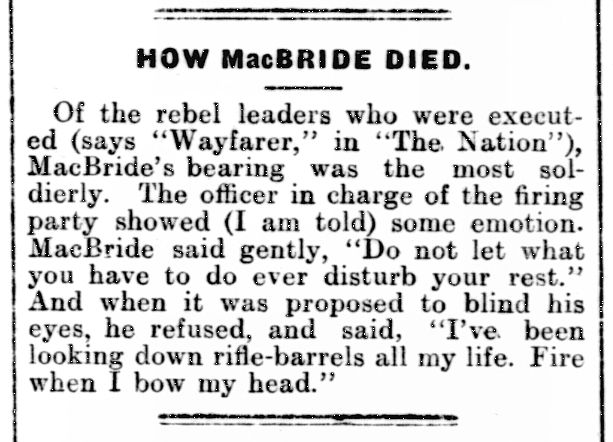
MacBride – Derry Journal 29 May 1916 0004 Clip
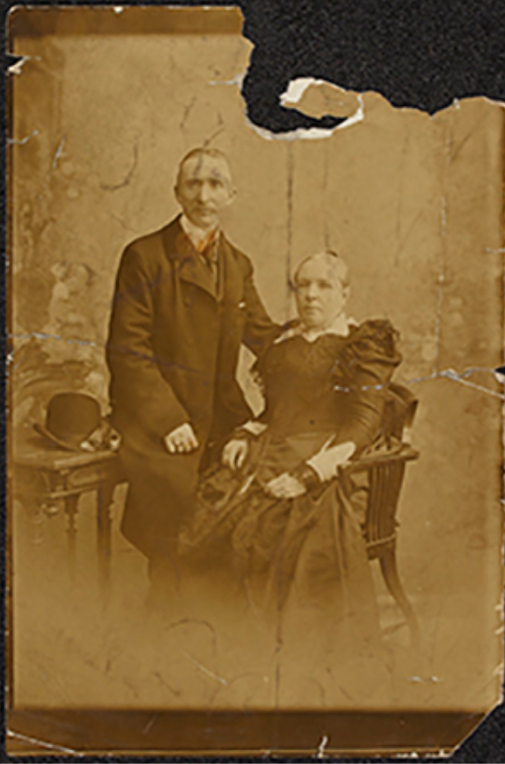
Major John MacBride and his MacBride mother Honoria 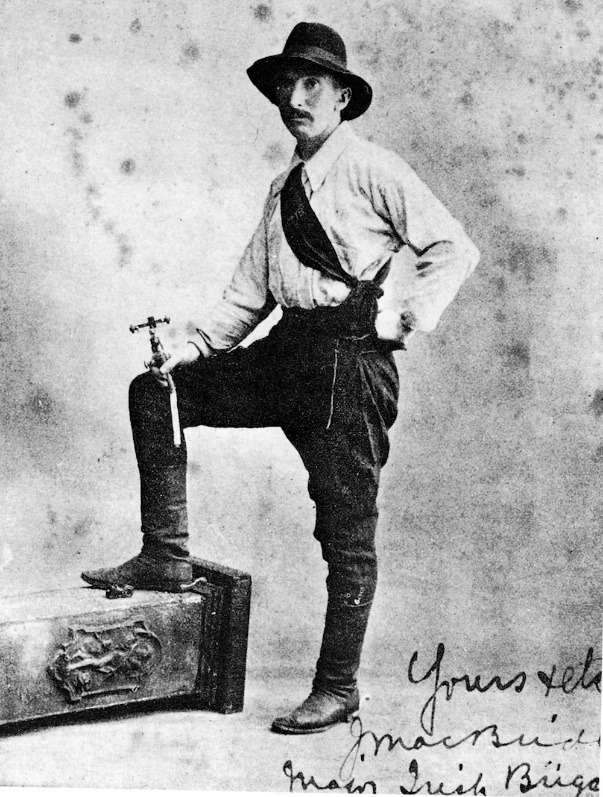
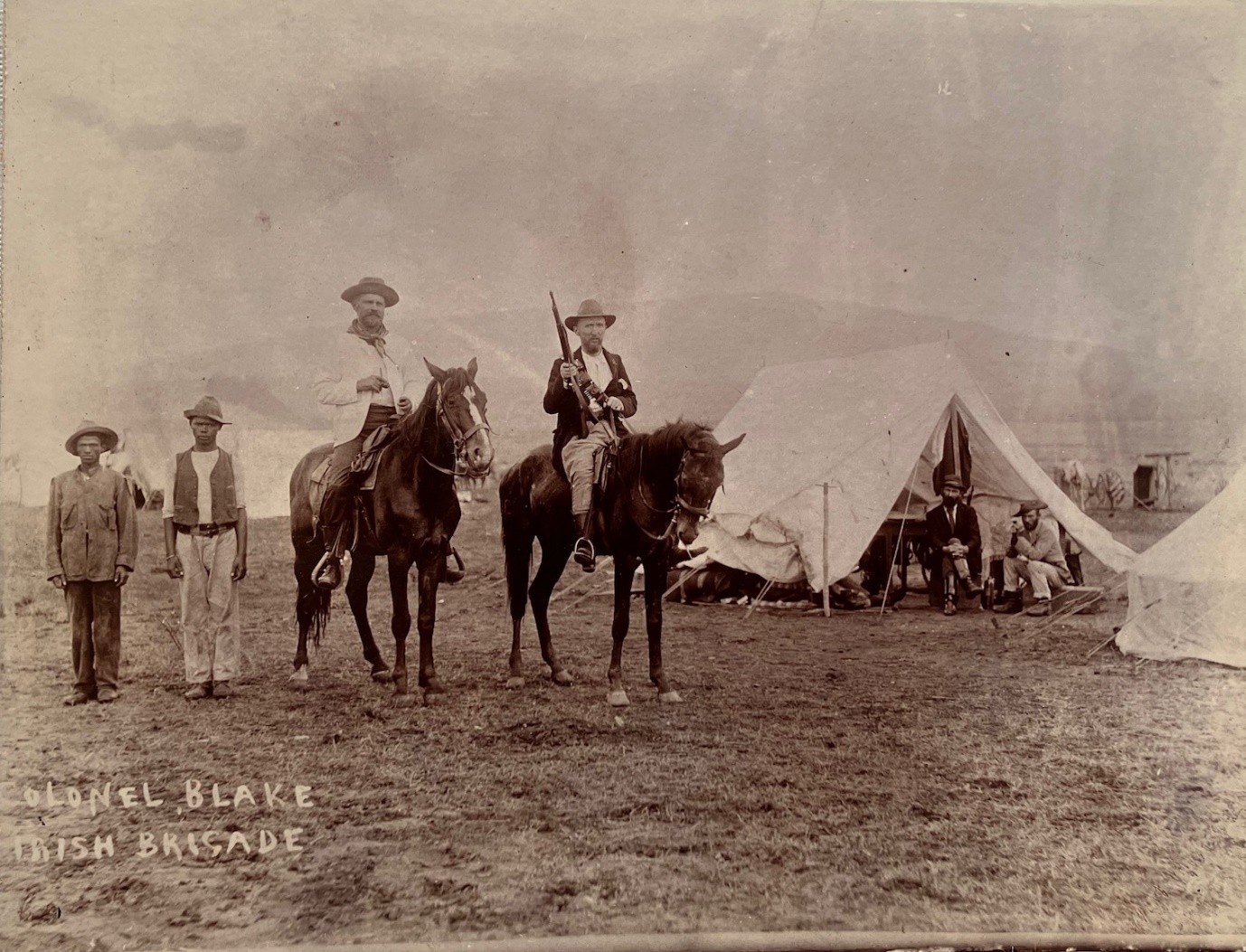
*In Ireland, an ‘Anti-War’ movement quickly emerged, though in reality it could better be described as ‘Anti-British.’ At one meeting in October 1899, a crowd of 20,000 listened as a letter was read from the mayor of Kilkenny, who proposed that two maxim guns be sent to the Boers with which they could defend themselves. One could be called ‘Parnell’, and the other ‘Wolfe Tone’.
By September 1899, a proposal for an Irish Transvaal Brigade was put to the Boer government and accepted. This Brigade was, in reality, led by John Blake, a maverick Irish American who had military experience in the US armed forces. MacBride was a hugely important figure in the Brigade however and would assume control for a period when Blake was wounded in fighting.
While the Irish Brigade was numerically small, consisting of circa 300 men, it should be noted that in the region of 28,000 Irishmen fought in South Africa as members of the British forces. From time to time, these two bands encountered one another, for example at the brutal Battle of Dundee.
The participation of Irishmen on both sides of a foreign conflict led to some ridicule. One contemporary song joked that:
“McGarry took O’Leary, O’Brien got McNamee, That’s how the English fought the Dutch at the Battle of Dundee!” *
* http://theirishrevolution.ie/1916-lives-john…/…
**
“……..On Monday October 30, 1899, at the Battle of Modderspruit, MacBride had his horse shot from under him but was not seriously hurt. Col. Blake was not as lucky, as a serious shell wound to his arm put him out of action for about six weeks. That put MacBride in actual command of the brigade upon which the Irish had already bestowed his name. The Boers at this point had surrounded the British in the town of Ladysmith and hunkered down for a siege that would last 118 days.
This was not a happy time for the Irish Brigade, as the boredom of siege warfare took its toll on morale. By the time it was over their numbers were down to under 100 and Blake was taking less and less interest in his command. At this same time a second Irish Brigade was formed in Johannesburg under Australian Arthur Lynch**
“I have looked down the muzzles of too many guns in the South African war to fear death and now please carry out your sentence.”
*
** http://thewildgeese.irish/…/fighting-the-vampire-irish…
Photo Credit – https://en.wikipedia.org/wiki/John_MacBride